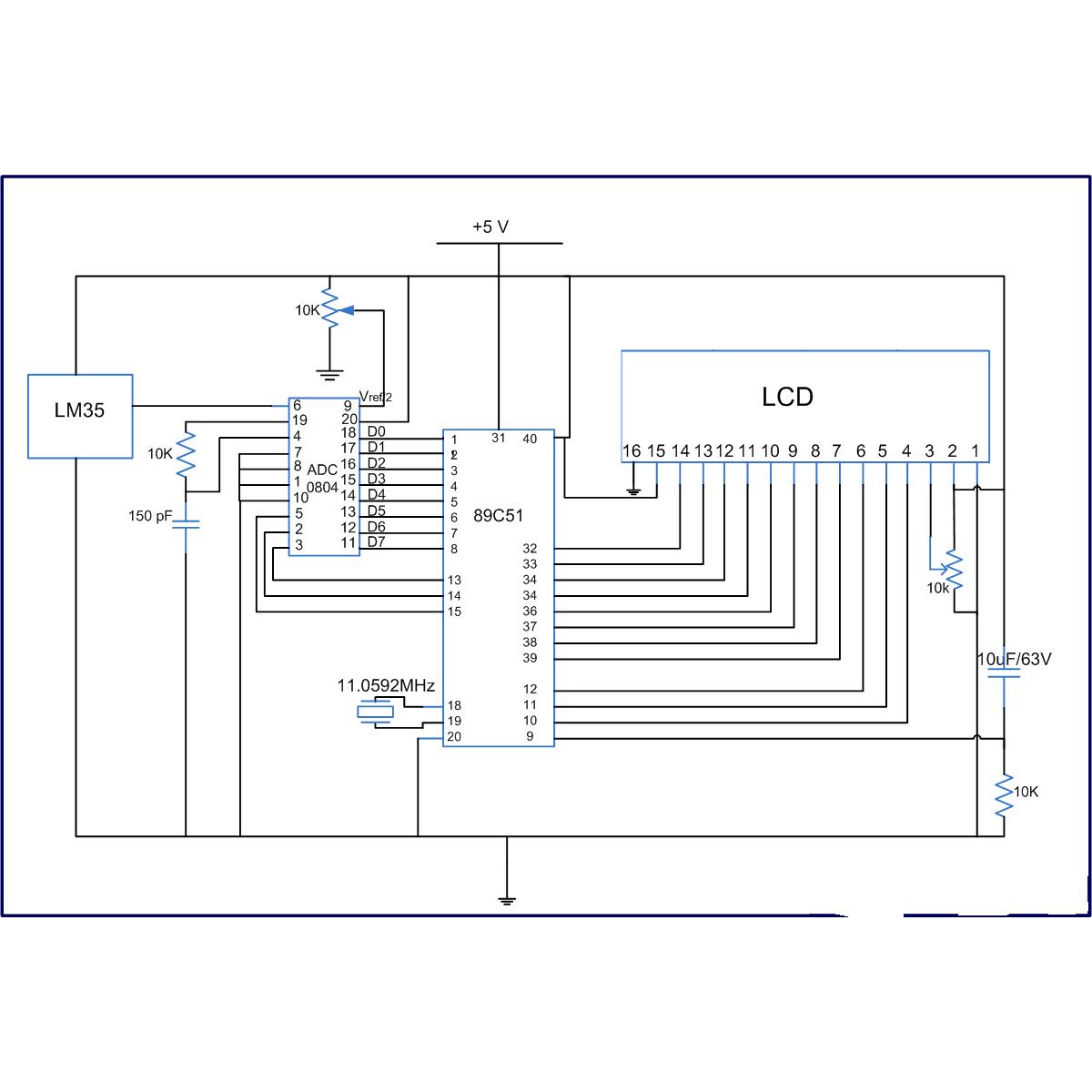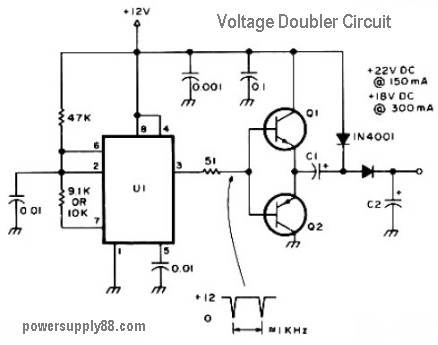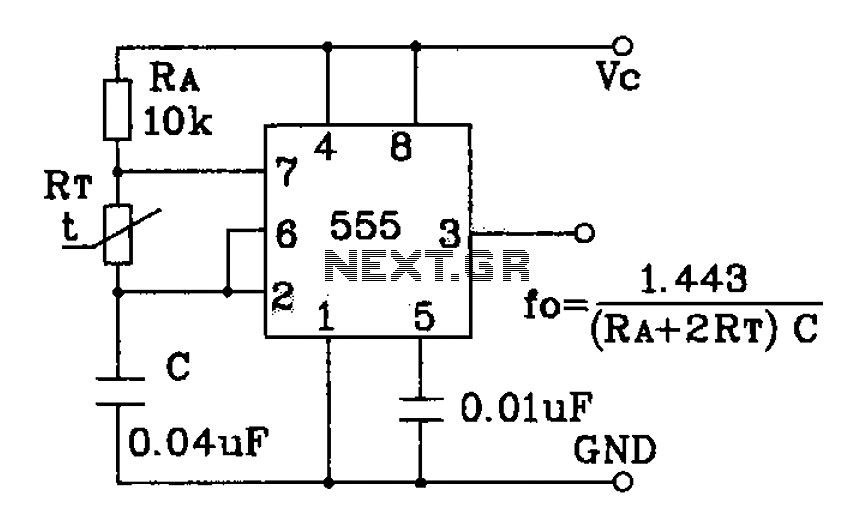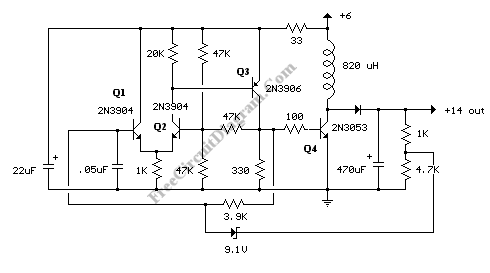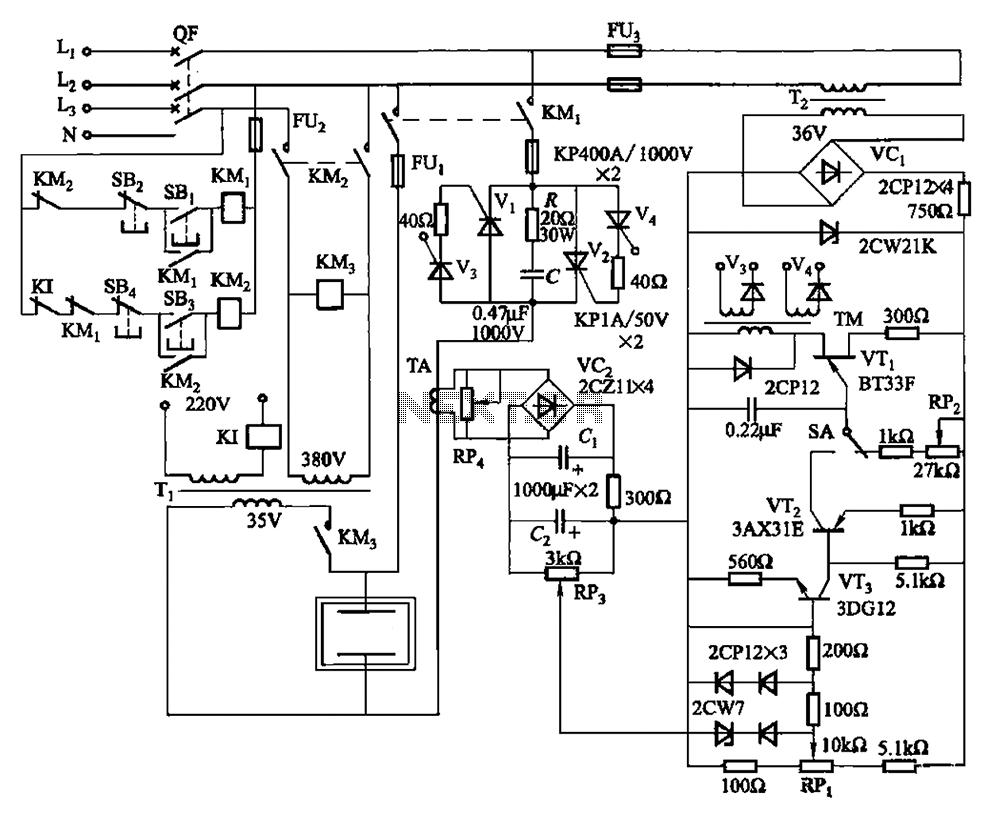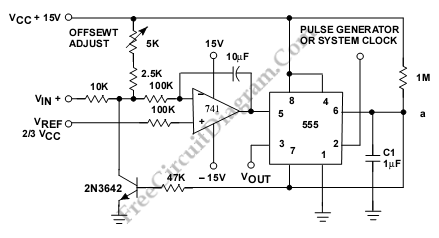
Board System Monitoring for Temperature and Voltage Condition
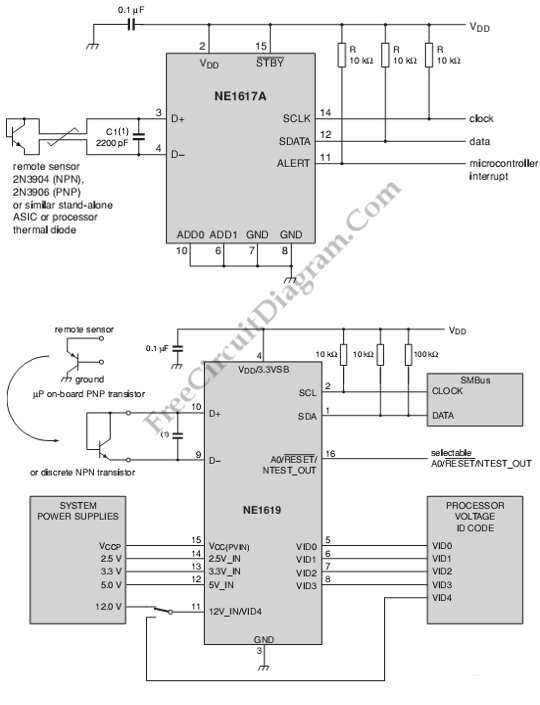
This is a circuit of a board system monitoring the temperature and voltage conditions. It uses the NE1617A, which is a 2-channel temperature sensor.
The described circuit serves as a monitoring system for both temperature and voltage conditions, utilizing the NE1617A integrated circuit. The NE1617A is designed to provide accurate temperature readings from two separate channels, making it suitable for applications where temperature monitoring is critical.
In this circuit, the NE1617A interfaces with a microcontroller or a microprocessor, enabling the collection of temperature data for further processing or display. The output from the NE1617A can be in the form of analog voltage levels or digital signals, depending on the specific configuration and requirements of the application.
Additionally, the circuit may include voltage monitoring capabilities, which can be achieved by integrating voltage sensors or comparators that provide feedback on the supply voltage levels. This feature ensures that the system can operate within specified voltage ranges and can trigger alarms or corrective actions if voltage levels fall outside acceptable limits.
The overall design may incorporate various components such as resistors, capacitors, and possibly operational amplifiers to filter noise and stabilize the readings from the temperature sensor. Furthermore, the circuit could utilize a power supply management system to ensure that the NE1617A and associated components receive a stable voltage supply.
In summary, the circuit is a comprehensive solution for monitoring temperature and voltage conditions using the NE1617A, making it suitable for a wide range of applications in industrial, automotive, or consumer electronics sectors.This is a circuit of board system monitoring for temperature and voltage condition. It uses the NE1617A. The NE1617A is a 2 channel temperature sensor. It can. 🔗 External reference
The described circuit serves as a monitoring system for both temperature and voltage conditions, utilizing the NE1617A integrated circuit. The NE1617A is designed to provide accurate temperature readings from two separate channels, making it suitable for applications where temperature monitoring is critical.
In this circuit, the NE1617A interfaces with a microcontroller or a microprocessor, enabling the collection of temperature data for further processing or display. The output from the NE1617A can be in the form of analog voltage levels or digital signals, depending on the specific configuration and requirements of the application.
Additionally, the circuit may include voltage monitoring capabilities, which can be achieved by integrating voltage sensors or comparators that provide feedback on the supply voltage levels. This feature ensures that the system can operate within specified voltage ranges and can trigger alarms or corrective actions if voltage levels fall outside acceptable limits.
The overall design may incorporate various components such as resistors, capacitors, and possibly operational amplifiers to filter noise and stabilize the readings from the temperature sensor. Furthermore, the circuit could utilize a power supply management system to ensure that the NE1617A and associated components receive a stable voltage supply.
In summary, the circuit is a comprehensive solution for monitoring temperature and voltage conditions using the NE1617A, making it suitable for a wide range of applications in industrial, automotive, or consumer electronics sectors.This is a circuit of board system monitoring for temperature and voltage condition. It uses the NE1617A. The NE1617A is a 2 channel temperature sensor. It can. 🔗 External reference
